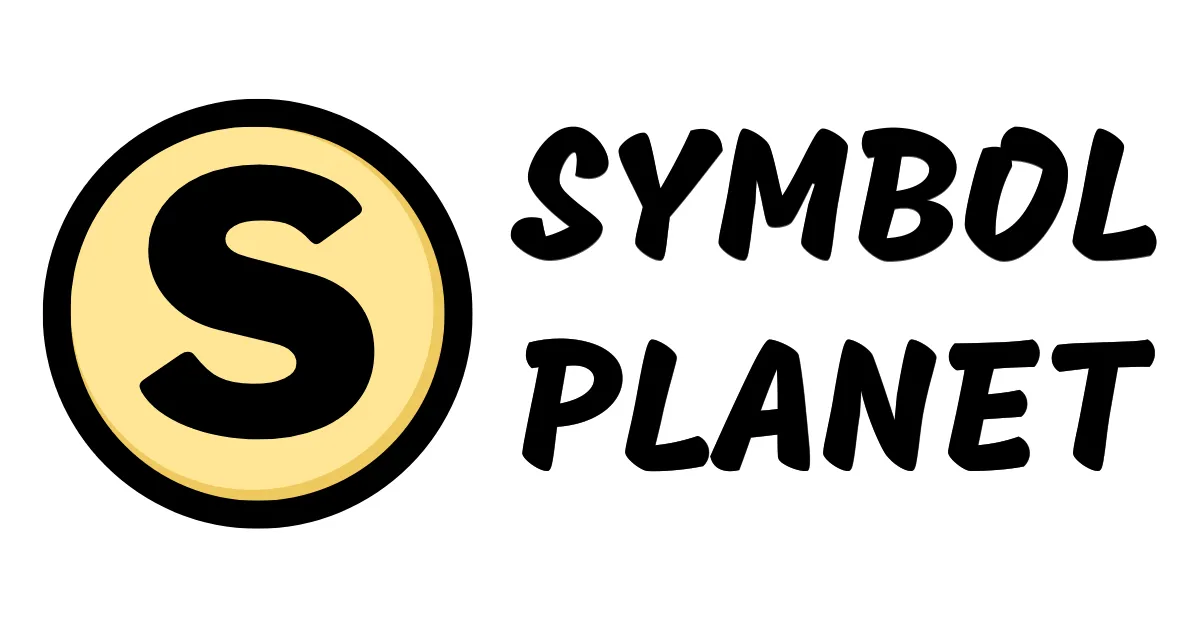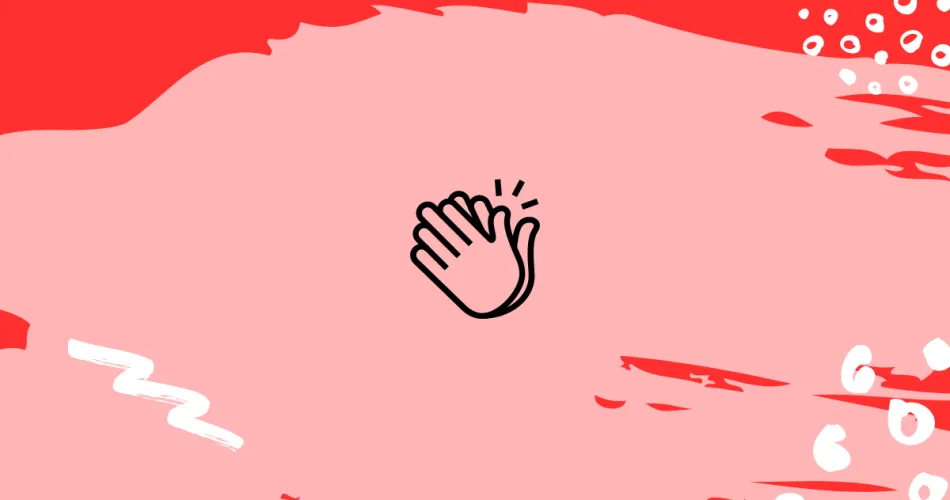Here’s what we’ll cover:
- 👏 clapping hands emoji meaning
- How do you reply to 👏 clapping hands emoji?
- What does 👏 clapping hands emoji mean from a girl?
- What does 👏 clapping hands emoji mean from a guy or boy?
- What does 👏 clapping hands emoji mean on Snapchat?
- What does 👏 clapping hands mean in Texting or Chat?
- What does 👏 clapping hands emoji mean on Instagram?
- What does 👏 clapping hands emoji mean on TikTok?
- What does 👏 clapping hands emoji mean in slang?
- Cultural differences in 👏 emoji interpretation
- Emoji etiquettes
- Possible combination
- Misinterpretations to avoid
👏 clapping hands emoji meaning
The 👏 clapping hands emoji means applause or celebration. It is a digital representation of two hands coming together to create a clapping sound. While it is most commonly used to convey applause, this emoji can also have other meanings depending on the context.
The clapping hands emoji can also represent:
1. Support or encouragement: Sometimes, the clapping hands emoji is used to show support or encouragement for someone or something. It can be a way to celebrate an accomplishment or show appreciation for a job well done.
- “Great job on your presentation! 👏”
- “You passed your exam! 👏”
2. Sarcasm or passive-aggressiveness: In certain situations, the clapping hands emoji can be used sarcastically to convey annoyance or frustration. It may be accompanied by a sarcastic comment or used as a passive-aggressive response.
- “Oh, you’re so clever. 👏”
- “Congratulations on being five minutes late. 👏”
The clapping hands emoji is incredibly versatile and can be used in various contexts depending on the user’s intent. So, whether you want to highlight an achievement, show support, or express sarcasm, this emoji can be your go-to choice.
How do you reply to 👏 clapping hands emoji?
To reply to the 👏 clapping hands emoji, you can express appreciation, agreement, or support. Some examples are: “Great job! 👏”, “I totally agree! 👏”, “You’re doing amazing! Keep it up! 👏”
- “Great job! 👏”
- “I totally agree! 👏”
- “You’re doing amazing! Keep it up! 👏”
What does 👏 clapping hands emoji mean from a girl?
The 👏 clapping hands emoji from a girl means she wants to give you a round of applause! It’s like she’s cheering you on – whether you made a hilarious joke or did something impressive. It’s her way of showing support or appreciation with a dash of enthusiasm! For instance, if you told a funny story, she might respond with “👏 That was hilarious!” or if you aced a test, she might send “👏 Congrats, rockstar!” It’s her virtual way of applauding your achievements or even just boosting your ego. So, don’t be surprised if you receive this emoji – it’s a good sign that she’s rooting for you and wants you to bask in the glory of her virtual applause!
What does 👏 clapping hands emoji mean from a guy or boy?
The 👏 clapping hands emoji from a guy or boy means he’s showing his appreciation or support! This cheerful palm-to-palm action is like a digital round of applause, an enthusiastic high-five, or even a virtual standing ovation. It’s a way for guys to express approval, celebrate achievements, or simply acknowledge something worthy of applause. For instance, imagine your buddy acing a tough exam, and he sends you a message with the clapping hands emoji: “Dude, you totally nailed it! 👏” Or let’s say your brother triumphs in a game and shares a photo with the emoji, signaling his victory with a playful touch: “I crushed it in the game! 👏”
- “That was an amazing goal! 👏”
- “Congrats on the new job! 👏”
- “You nailed your presentation! 👏”
What does 👏 clapping hands emoji mean on Snapchat?
The 👏 clapping hands emoji on Snapchat means applause or praise. It’s like giving someone a virtual round of applause for a job well done or showing appreciation. For example, you can use it to respond to your friend’s witty Snapchat story, like “👏 That joke was hilarious!” or to show support when your friend shares an achievement, like “👏 Congrats on getting that promotion!”
What does 👏 clapping hands mean in Texting or Chat?
The 👏 clapping hands emoji in Texting or Chat means applause, celebration, or praise. It’s like giving a virtual round of applause without actually clapping your hands. People use it to show their support or appreciation, often to congratulate someone or acknowledge their achievement. For instance, in group chats on WhatsApp or Twitter, you might find messages like:
- “Congrats on your promotion! 👏”
- “You aced that exam! 👏”
- “Great job on the presentation! 👏”
What does 👏 clapping hands emoji mean on Instagram?
The 👏 clapping hands emoji on Instagram means applause or congratulations. It’s like giving a round of applause to something cool or exciting. So, when your friend posts a pic of their epic vacation, you can comment “Wow! That looks amazing! 👏” or when your sibling graduates, you can say “Congratulations! 👏”
- “Your new hairstyle is on point! 👏”
- “You aced your exam! Congrats! 👏”
- “That dance move is fire! 👏”
What does 👏 clapping hands emoji mean on TikTok?
The 👏 clapping hands emoji on TikTok means applause or praise. It is used to show approval, excitement, or admiration for someone’s talent, funny video, or impressive content. TikTok users often include this emoji in their comments or captions to express their appreciation and encourage others.
- “That dance routine was 🔥👏!”
- “You absolutely nailed that impression! 👏”
- “This recipe is genius! Can’t wait to try it! 👏”
What does 👏 clapping hands emoji mean in slang?
The 👏 clapping hands emoji in slang means applause or praise. It’s like giving a round of applause without actually clapping. It can be used to show support, enthusiasm, or to celebrate something. For example, “Congrats on acing that test! 👏” or “You nailed that joke! 👏”
Cultural differences in 👏 emoji interpretation
Cultural differences can lead to varying interpretations of the 👏 clapping hands emoji, resulting in misunderstandings and hilarity.
- “In Japan, a clap emoji signifies approval, while in Brazil, it is commonly used to convey sarcasm,”
- “In India, it is often seen as an expression of encouragement, but in Russia, it can be seen as a competitive gesture,”
- “In Italy, it may indicate agreement, but in Germany, it can be seen as a sign of impatience,”
- “In Sweden, clapping hands emoji might indicate appreciating a clever joke, but in France, it could mean the end of a performance,”
- “And of course, in the U.S., it simply means ‘great job, buddy!’ or quite possibly ‘bravo for finishing that pizza slice!’ “
Emoji etiquettes
When using the 👏 clapping hands emoji, it’s important to remember to keep it sincere and avoid excessive usage. Use it to applaud someone’s achievements or show appreciation, but save it for deserving moments.
- “👏 Great job on completing that 5-minute mile! You really ran your socks off!”
- “👏 Congrats on winning the hotdog eating contest! Your dedication to junk food is truly impressive.”
- “👏 Bravo on finishing your vegetables! The broccoli can finally breathe a sigh of relief.”
Possible combination
Possible emoji combinations that go with the 👏 clapping hands emoji include 👏🔥 for an enthusiastic applause, 👏🍕 for showing appreciation for delicious food, and 👏🎉 to celebrate a special occasion.
- “👏🔥” – when your friend nails a joke and everyone laughs
- “👏🍕” – when your pizza arrives perfectly cooked and you can’t wait to dig in
- “👏🎉” – when it’s your birthday and you’re ready to party
- “👏💯” – to applaud someone’s excellent achievement
- “👏🌟” – when someone shines bright like a star and deserves recognition
Misinterpretations to avoid
Misinterpretations to avoid for 👏 clapping hands emoji: It does not mean “I’m applauding your terrible idea” or “I accidentally sat on a cactus and it hurts!”
- “👏 Nice job on eating that whole pizza by yourself!”
- “👏 Congrats on tripping over your own feet, graceful as always!”
- “👏 Well done on misplacing your keys for the third time today, Sherlock!”

